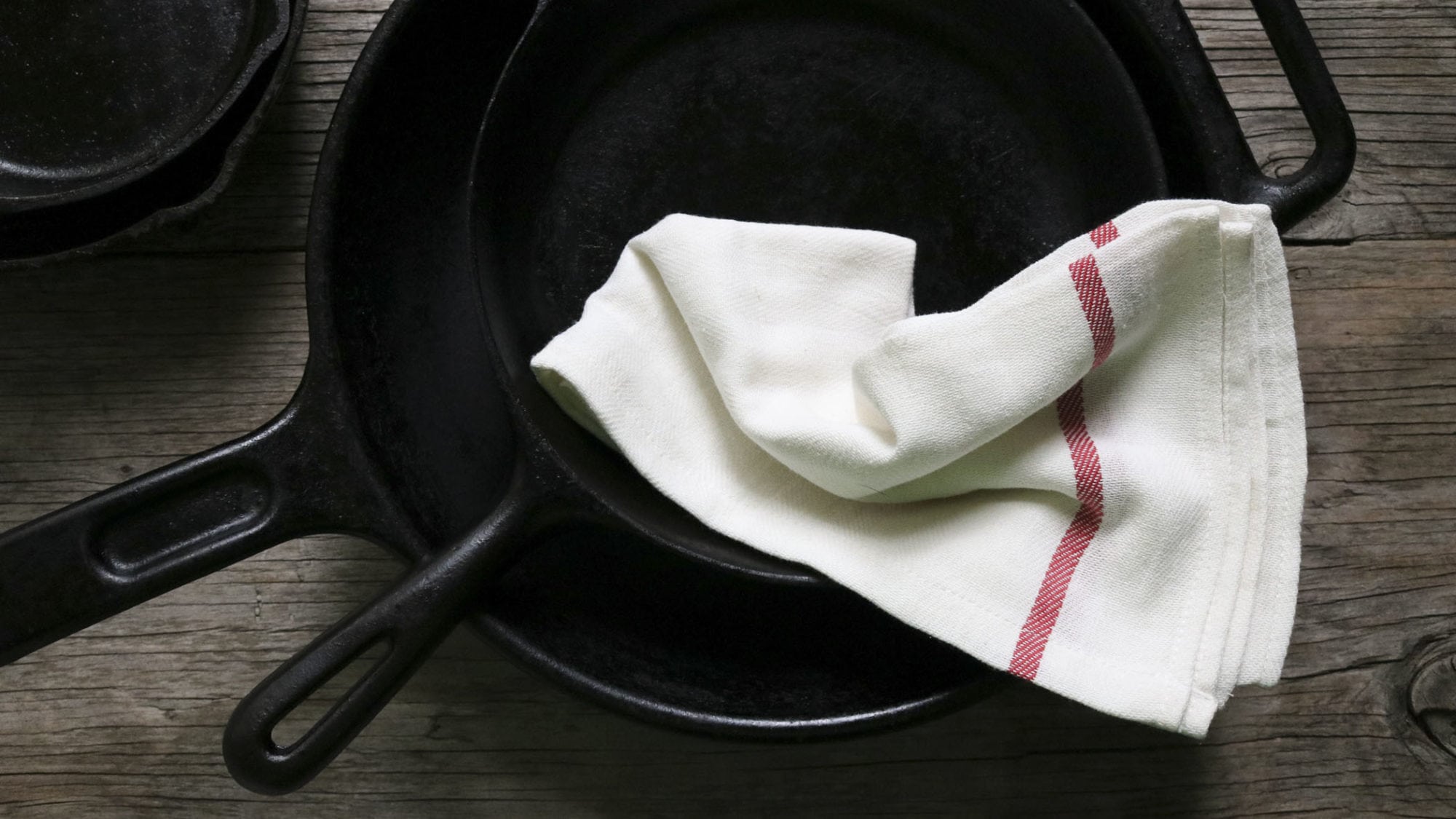Cast iron pots and pans have been around for centuries, no doubt because they’re workhorses in the kitchen. Cast iron pans not only improve with age, but their ability to withstand high temperatures means they can easily go from home stove to campground and back again without worry. You can go so far as to tuck your pan directly onto a bed of coals without worrying about ruining it.
A MULTI-FUNCTIONAL TOOL
One good skillet can help you with breakfast, lunch and dinner, standing in for a range of baking dishes and roasters. It’s ideal for pancakes, can bake, roast and even handle dessert, and it’s the first choice of many high-end steakhouses when it comes to searing a perfect steak. If you’re hitting the road in your RV this summer, you can get away with storing just this one solid pan.
PICKING A PAN
Cast iron pans generally are associated with older generations, but these days they’re sought after at garage sales and thrift stores, particularly the smooth, well-seasoned ones that over the years have developed a beautiful, virtually nonstick surface that’s perfect for cooking everything from fish to eggs. Yet despite their virtual indestructibility, people still tend to be intimidated by them.
Cast iron need not be as gingerly tended to as many believe. It’s not necessary to avoid soap, or to eschew soap in favour of salt and warming the pan dry on the stovetop. You can also use metal flippers, tongs and cooking utensils on its surface.
If you’re starting from scratch, I prefer raw cast iron to pre-seasoned pans, which tend to be stickier and never quite develop the same smooth surface. Discovering or inheriting a well-seasoned pan is the ideal scenario.
MORE TO READ
Cast Iron Cooking 101
PREP AND SEASONING
To transform new (or abused) cast iron into the cast iron pan of your dreams—and to maintain that seasoning—all you need are two elements: heat and fat.
New raw cast iron is a medium grey, with a slightly rough, pebbled surface, waiting to be transformed into the slick black we recognize in good cast iron. To achieve this, rub a thick coating of fat—inexpensive lard or canola oil will both work fine—and slide it into your oven, off to the side or onto the lower rack, to heat up as you cook and bake other things. Once in a while, set it on a burner, over a flame on the stovetop or on the grill, drizzling some oil in the bottom and turning the heat off once it starts smoking. Roast whole chickens in it. Temperatures over 200˚C are ideal for the fat to polymerize, but all doses of heat help.
CLEANING AND CARE
When it’s time to clean your pan, there’s no need to rely on an exfoliating pomade of salt and oil to slough away any food or dried-on bits. Often, if you’re frying an egg or sautéing some veggies, all you need to do is wipe out the pan with a damp cloth or paper towel. If necessary, the pan can withstand dish soap, and even a scrubber—prefer plastic to steel wool—but try to avoid soaking it. If you find your pan’s patina diminished, just give it another dose of heat and fat.
A well-seasoned pan resists rust fairly well, but it’s still a good idea to dry it quickly with a tea towel before putting it away. (I leave my nine-inch cast iron on the stovetop, not only because I use it almost constantly, but it air-dries quickly in our Alberta climate.) If you do unearth a rusty, neglected cast iron skillet, you can bring it back to life by scrubbing it well with an S.O.S pad, returning it to its raw state, and seasoning it from scratch.
Once you get used to having cast iron in your kitchen—or on the road—it will become your most versatile cooking companion, and one that will last a lifetime.
Julie Van Rosendaal is a cookbook author, food columnist for Eyeopener on CBC Radio in Calgary, and a contributing food editor for the Globe and Mail. She also publishes recipes on her own website, Dinner with Julie.
